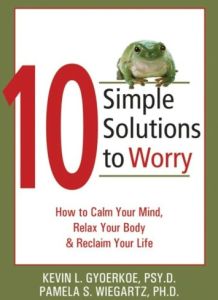Join getAbstract to access the summary!

Join getAbstract to access the summary!
Kevin L. Gyoerkoe and Pamela S. Wiegartz
10 Simple Solutions to Worry
How to Calm Your Mind, Relax Your Body & Reclaim Your Life
New Harbinger, 2006
What's inside?
How to live a worry-free life
Recommendation
You can indeed be free of worry, even if achieving that goal is not quite as simple as the advice in Bobby McFerrin’s 1988 chart-topping song, “Don’t Worry, Be Happy.” Anxiety experts Kevin L. Gyoerkoe and Pamela S. Wiegartz explain their well-grounded approach to understanding worry and its impact on your life, including your health, relationships and productivity. Their upbeat little book packs a powerful one-two punch that illuminates and clarifies the basic elements of “productive” and “unproductive” worry, and then gives you specific directions for managing and even eliminating useless fretting from your life. Using “cognitive behavioral therapy” principles, exercises and techniques, you’ll be able to identify and change the negative thoughts that cause worry and begin to lead a more stress-free, balanced life. getAbstract recommends this small gem as a fine resource for working through your worries.
Summary
About the Authors
Kevin L. Gyoerkoe, PsyD, is co-director of the Anxiety and Agoraphobia Treatment Center. Pamela S. Wiegartz, PhD, is assistant professor of clinical psychology at the University of Illinois at Chicago.

















Comment on this summary